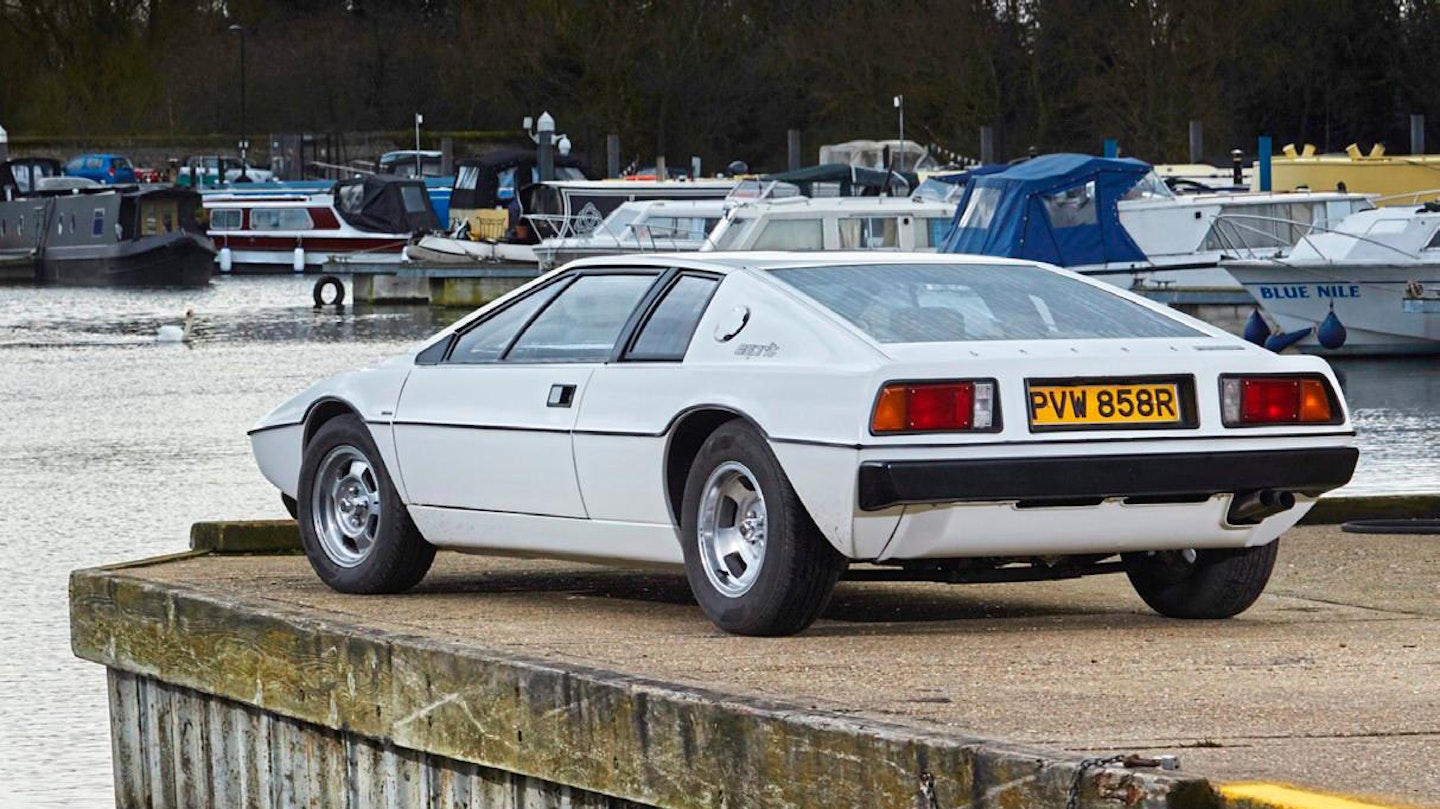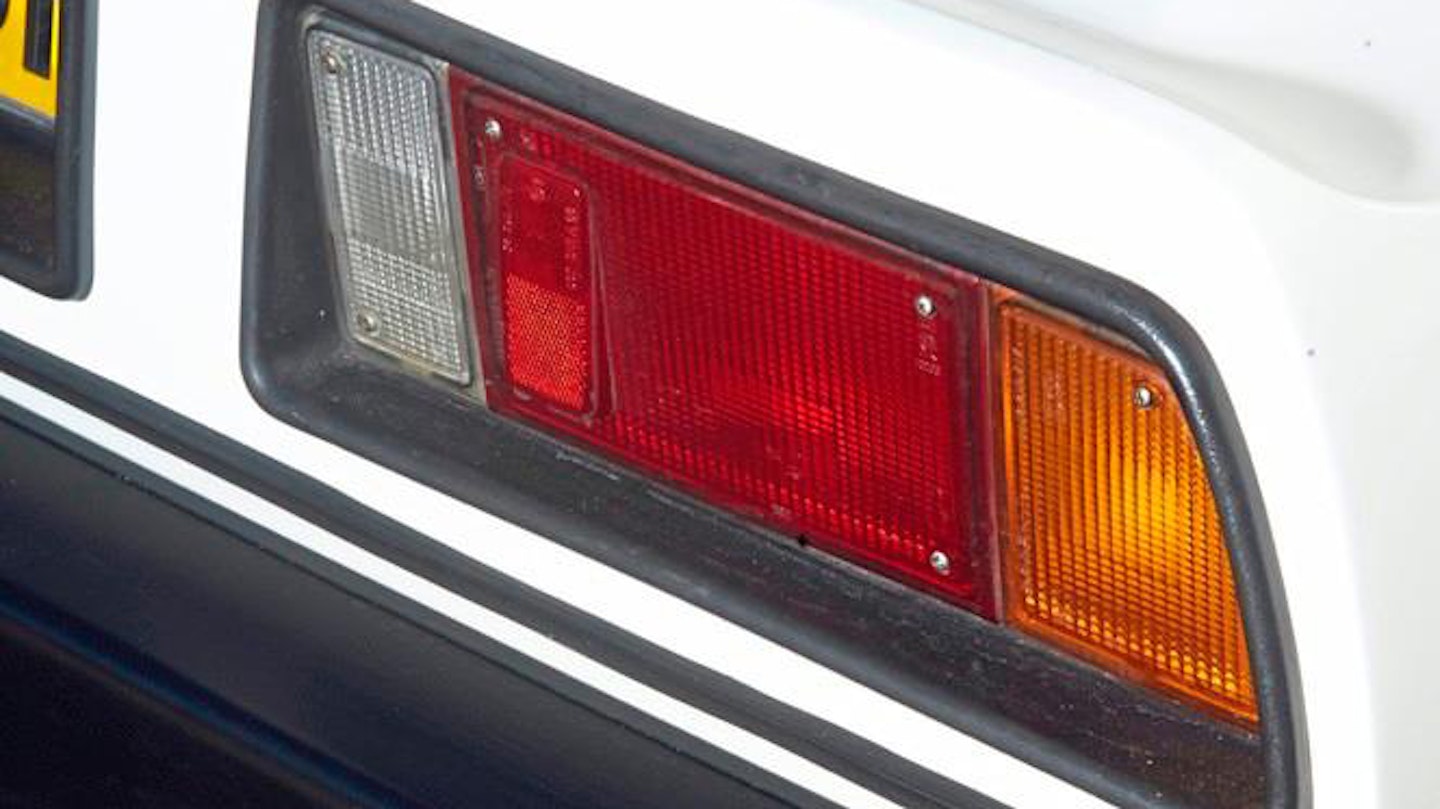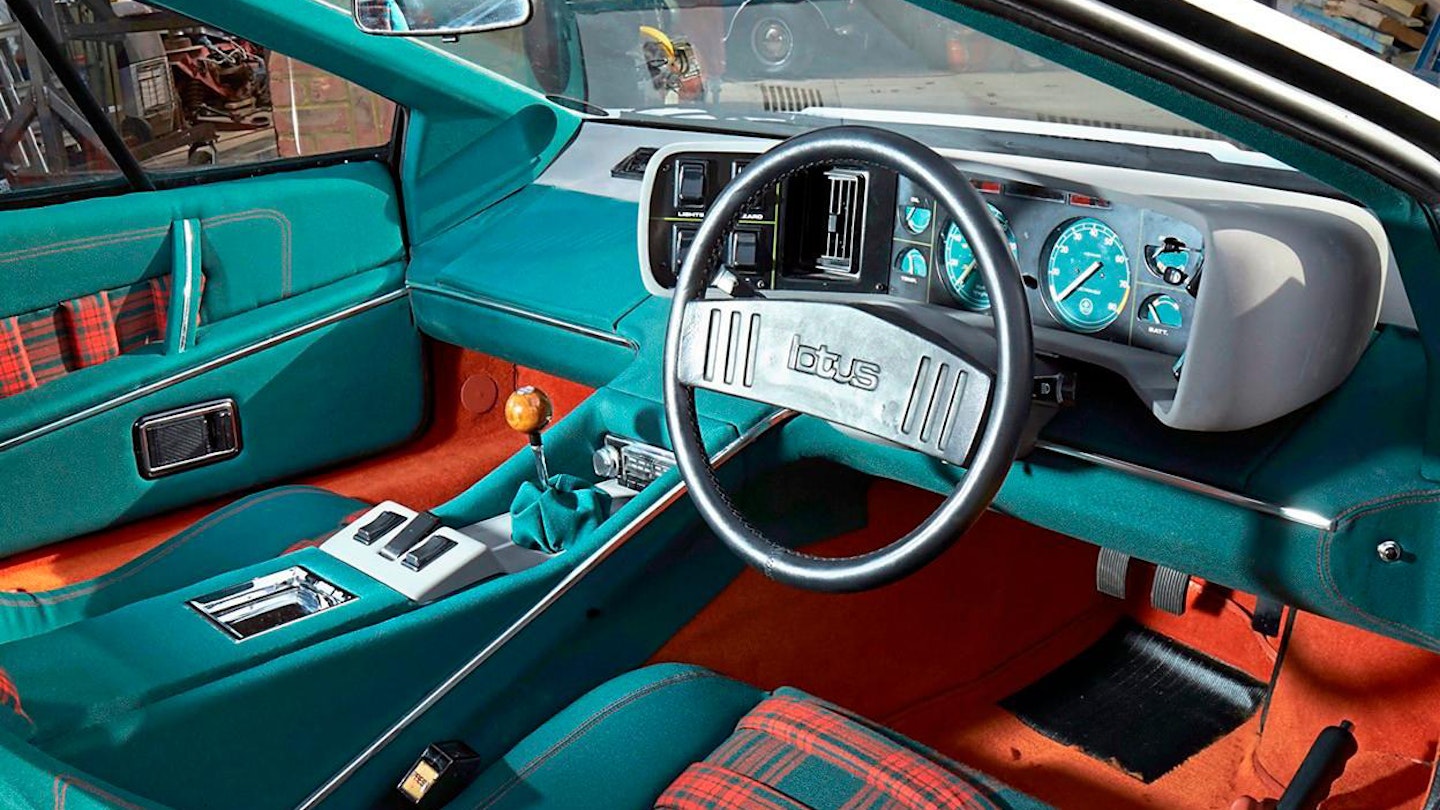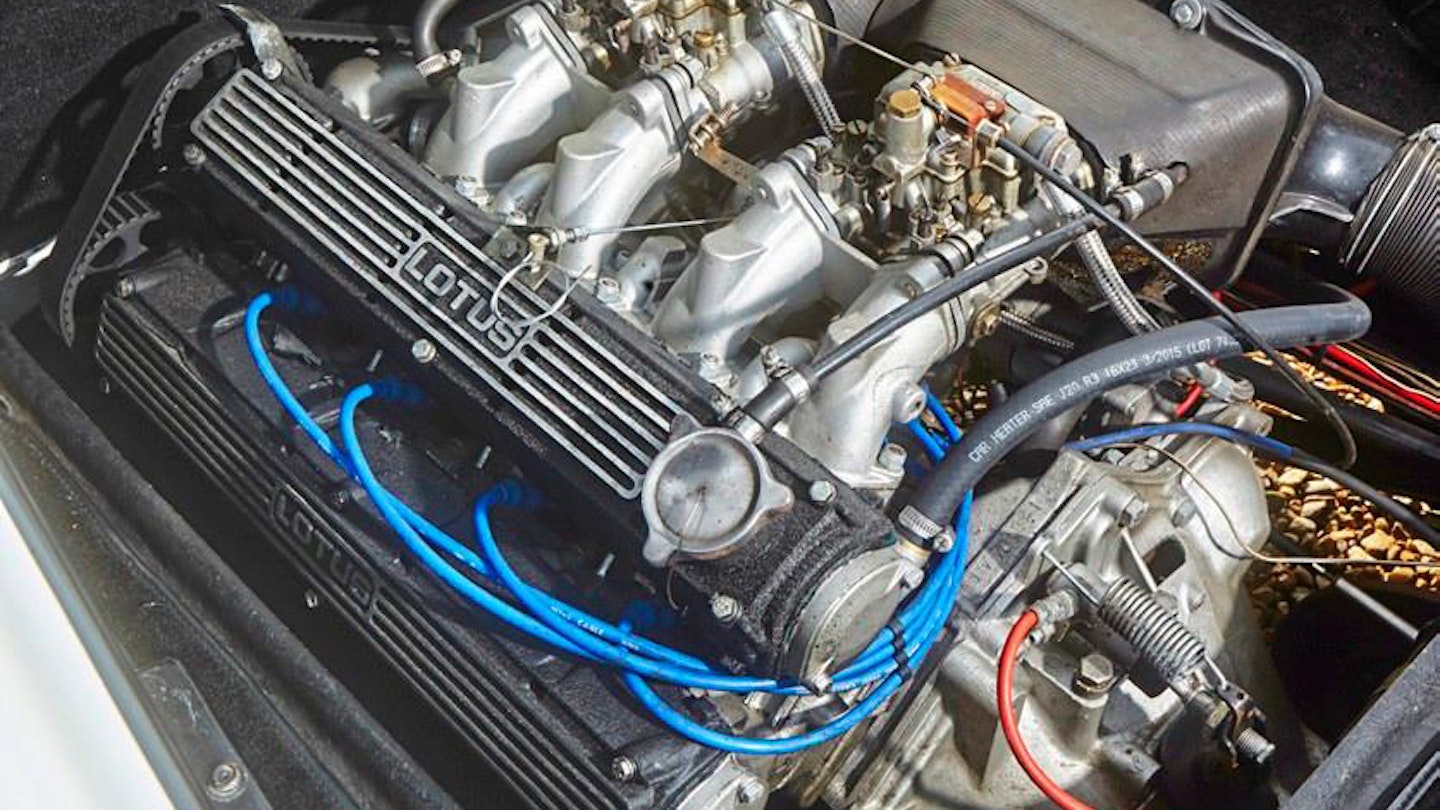MARKETPLACE
More exotic than an Italian and faster than a German? James Walshe says the Esprit’s time has come!

Esprit drops jaws out on the road.
Why you want one
It’s the exotic British supercar so exclusive, that not even Roger Moore could get his hands on one when it was launched. After giving Lotus a great big boost by showcasing its new car to the world in 1977 Bond film The Spy Who Loved Me, the 007 actor was reportedly refused a discount – although we suspect it had more to do with the Esprit’s low asking price, which was a fraction of what Porsche and Ferrari were charging for their supercars at the time. Surely Rog could have put his hand in his pocket? Despite its bargain price, nowadays, the arrival of an Esprit on the show field is more likely to make an impact than any Italian supercar.
The Lotus Esprit S1-S3 may jangle the nerves of an inexperienced buyer and, while early cars suffered from a rot-prone chassis, these days you’ll find the dogs have long since departed and what’s left will have been fixed and cherished by a dedicated band of owners. The 1976 S1 ‘G car’ (Giugiaro) with its 2-litre 130bhp Lotus engine and Citroën SM gearbox is a sought-after version, for sure. However, it came with its fair share of issues and was replaced after two years by the S2 – essentially an S1 with some of the problems rectified, (like the poor cooling system). 1980 saw the introduction of the rare ‘S2.2’, with its 2.2-litre engine (only 100 were produced) and a John Player Special version to mark the F1 championship win. The 210bhp ‘Essex’ Turbo arrived in late 1980, complete with stiffened chassis and body kit, to be followed by the S3 in 1981. With numerous refinements and all versions getting the stiffened chassis of the Turbo, the S3 is the most sought after for some. The run-out Turbo HC of 1986 is a popular choice, being stronger, faster and better built than its predecessors. The S3 was replaced by the so-called ‘S car’ (Peter Stevens styled) of 1987. Bangs for buck aplenty, but dare you take the plunge?
The inspection
Check the entire body for star cracks in the glassfibre from flying stones. In addition, study the nearside rear wing, which is sometimes damaged by objects in the boot being allowed to move around. The offside wing is protected by the battery, so damage is unlikely here. The nose suffers from stone chips; hopefully any damage will be confined to unsightly paint, but in some cases the plastic itself may have been harmed.
The corners are most likely to have suffered poorly repaired accident damage where the glassfibre hasn’t been let in properly, although parking scrapes could lead to scars anywhere. Paint that has sunk will appear mottled where some of the pigment has remained on the surface. It’s possible to mend damaged glassfibre invisibly but requires skill – those we’ve featured in PC who’ve restored glassfibre cars have often talked of it being easier to work with than steel, once you’ve got the hang of it. If you’re not confident and scars are evident, get an estimate of what a specialist will charge to put it right. Treating several areas will be a labour intensive (and costly) process of grinding back the glassfibre and letting in fresh matting – a reportedly satisfying process!
Chassis damage and rot are not easy to repair. Esprit S2.2s on had a galvanised chassis, so these later cars are even less likely to be suffering from tin worm. If you’re looking at a S1 or S2 the only way of making sure that the chassis isn’t rotten is to put the car on a ramp. An insulating layer of felt between the chassis and the bodyshell absorbs water and then corrodes the chassis. It’s not possible to check the top of the chassis because it is out of sight, but tapping the metal with a hammer should elicit a crisp clang. If you hear a dull thud, it’s likely that corrosion is causing the metalwork to dissolve.

This one is far better on the road than in the water.
Esprits use one of three versions of the Lotus all-alloy twin-cam engine. The first two-litre examples were designated type 907, followed by the 2.2 (type 912) and 2.2 turbo(type 910). All of them should easily cover 100,000 miles between re-builds if 6000-mile/six-month service intervals have been adhered to. Although the Lotus twincam has a reputation for unreliability any major failings are usually because of an engine not being looked after properly. The cam belt should be replaced every 24,000 miles (or every two years).
If the engine misfires under acceleration check for oil in the spark plug recesses. The engine leaks oil from the gasket between the cam covers on to the exhaust manifold, where it gets burned off. If the carriers or covers have simply been tightened to cure such a leak damage will have resulted from stripped threads and distortion. It’s because of these leaks that the oil collects in the spark plug recesses.
As mentioned, the five-speed gearbox is the same one that’s used in the Citroën SM, and parts are getting hard to find. Gearchanges should be smooth and slick, but the tortuous linkages can go out of adjustment as the bushes and cables wear over time. The gearbox is durable — it’ll usually last a lot longer than an engine. The only thing to be wary of is worn bearings, so check that the gearbox isn’t making a lot of whining noises. If it is, you’re looking at having to replace the bearings. Anything more significant, such as damaged cogs, is likely to land you a big bill. The spigot bearing will fail if it hasn’t been greased, wrecking the crankshaft in the process.
There should be plenty of steering feel with no heaviness. If there is it’ll need a new rack – £200 plus specialist labour if you can’t do it yourself. Racks wear more quickly on S3s and later because the wider wheels and tyres put a greater strain on it. You won’t see much more than 48,000 miles out of a rack and a hard-driven cars could last half that. Poor self-centring is usually because the steering column universal joint has seized.
The Esprit’s electrics are reliable despite the numerous earthing problems usually associated with plastic-bodied cars. That said the electric window motors can seize thanks to corrosion and the glovebox-mounted fuse box can lead to problems when the fuses get knocked about. Esprit headlamp relays are worth checking carefully because they will be one of the first things to give trouble. The TR7-sourced headlamp motor itself also tends to fail at some point, but getting it repaired at an electrical engineer isn’t expensive. Also check the dashboard and footwells for any signs of deterioration because of water ingress.
BODY

Externally, the nose is the most likely area to be damaged by flying stones. Look out for signs of poor repairs where the glassfibre hasn’t been let in properly. Paint that has sunk will appear mottled.
CABIN

Various trim materials were used including leather, cloth and Marquasite, which is like crushed velvet. Leather tends to crack with age. Water ingress can cause damage to the cabin, so check for moisture.
ENGINE

Your prospective purchase will have one of a few versions of the Lotus all-alloy twin-cam engine – the first two-litres are designated type 907, followed by the type 912 2.2 and the type 910 2.2 turbo. Look out for blown cylinder head gaskets and fractured manifolds.
WHAT IT’S LIKE TO LIVE WITH
James Walshe tells the tale of two Esprits…

Fabian reckons the rewards make a resto worthwhile!
I’ve had the pleasure of driving two examples of Esprit that, while both were 007 replicas, they had nevertheless been restored to the highest standards. The film star looks distracted from the way in which they been so faithfully rebuilt to factory spec. This meant experiencing the exceptional road manners you’d come to expect from Lotus, with a pleasing thump of power from the Turbo, especially. That’s not to say Paul Coleman’s September 1976 registered Series 1, featured here, is a slouch. There’s plenty of punch from that modest 2-litre lump. He took his time to revive it though, having almost given up a few times. ‘I spent four years on the bodywork, learning as I went. For instance, before I could even think about prepping for paint, I left my glassfibre repairs for six months to make sure the filler didn’t sink. It’s certainly an art.’
Fellow Esprit enthusiast Fabian Steele, who also successfully restored his own The Spy Who Loved Me Esprit, went even further and built himself a replica of Bond’s Esprit Turbo from For Your Eyes Only. He began the mammoth task by removing the body from the chassis on his lawn. ‘My mate has a garden business, so I got four large fence posts off him and staked them around the car. I then designed a system of wooden beams, clamps and bolts, so that I could inch-by-inch lift the body on my own.’
In both cases, they carried out their projects very carefully, seeking advice and adapting to the unique challenges that a Lotus restoration presents. Says Fabian, who has recently restored yet another Turbo: ‘I originally thought restoring an Esprit would be a simple case of following instructions in a handbook but there’s scant information. That’s where the clubs and forums come into it!’
WHAT TO PAY
PROJECT £15-25,000
AVERAGE £25,000-£35,000
EXCELLENT £35,000-65,000
TECH SPEC
ENGINE 1973CC/4-CYL/OHC
POWER 160BHP@6200RPM
TORQUE 140LB FT@4900RPM
GEARBOX 5-SPEED MANUAL
TOP SPEED 138MPH
0-60MPH 8.4SEC
ECONOMY 25MPG
MARKET ANALYSIS
Early cars are worth a fair chunk more than all other Esprits these days, with prices dipping slightly for standard S2 models. You’ll still pay £30-40,000 for an S2 in tidy condition with a good history. That said, JPS-liveried S2s will set you back a lot more – as we went to press, there was one up for grabs for £63,000 online.
Traditionally, the S3 has represented the best value especially given the refinements, and indeed we found an average condition car for sale at £27,000, but as always in this market, exceptional examples of any type can exceed expectations when it comes to value.
Projects? Well… be prepared for a lot of hard work and potential expense when paying less than £20k. Any 007 replica will attract a premium but if that’s what you want, check the restorer wasn’t distracted from the basics (prioritise a rot-free chassis over missile launchers).
USEFUL CONTACTS
Club Esprit, clubesprit.co.uk
Club Lotus, clublotus.co.uk
Lotus Drivers’ Club, lotusdriversclub.org.uk
Subscribe to a PC Print+ Subscription today and you'll get instant digital access PLUS FREE UK delivery so you'll never miss an issue again. Check out our offers today.
